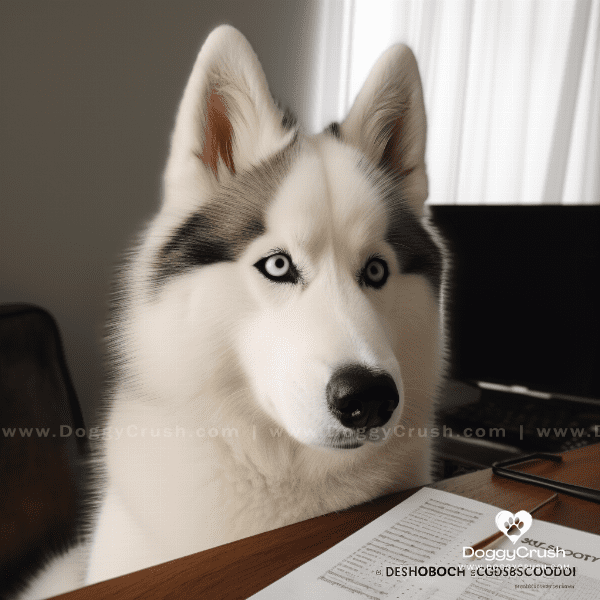Table of Contents
- History and Origin of the Siberian Husky Dog
- Appearance and Physical Characteristics
- Temperament and Personality Traits
- Intelligence and Trainability
- Exercise and Activity Requirements
- Grooming and Coat Maintenance
- Health Concerns and Common Issues
- Diet and Nutrition
- Living with a Siberian Husky Dog: Tips and Considerations
- Choosing the Right Siberian Husky for Your Lifestyle
History and Origin of the Siberian Husky Dog
Siberian Huskies have a fascinating history that dates back to thousands of years ago. They are an ancient breed and were originally developed by the Chukchi people, who lived in Siberia, Russia. These dogs were highly valued by the Chukchi people, who used them for various purposes, including as sled dogs and hunting companions.
Early Domestication
The Siberian Husky is believed to have originated from a lineage of domesticated wolves that existed in Asia about 35,000 years ago. The Chukchi people were among the first to domesticate these wolves and developed them into a distinct breed that we know today as the Siberian Husky. These dogs were specifically bred for their endurance, strength, and ability to survive in harsh Arctic conditions.
Role in the Gold Rush
In the early 1900s, Siberian Huskies gained global recognition due to their remarkable performance in the All-Alaska Sweepstakes, which was a dog sled race that covered a distance of 408 miles. The race took place in the midst of the Gold Rush, and Siberian Huskies quickly became the preferred breed of sled dogs for transportation and mail delivery in Alaska.
Popularity in Modern Times
Siberian Huskies continue to be a popular breed today, both as working dogs and as pets. They are known for their friendly and outgoing personalities, as well as their stunning appearance. The breed was recognized by the American Kennel Club (AKC) in 1930, and today, they are one of the most popular Dog breeds in the world.
Fun Fact
The famous sled dog, Balto, who led the final leg of the serum run to Nome in 1925, was a Siberian Husky. Balto’s statue is located in New York City’s Central Park.
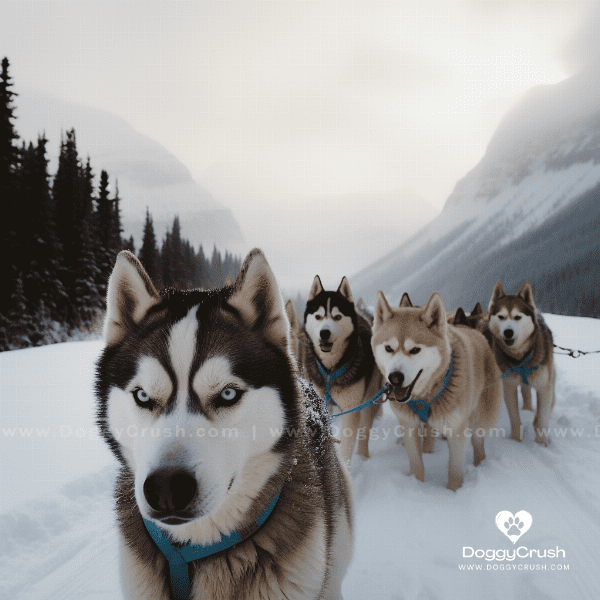
Appearance and Physical Characteristics
Siberian Huskies are a medium-sized breed, typically weighing between 35 and 60 pounds and standing between 20 and 24 inches tall. They are known for their striking appearance, with a dense double coat that comes in a variety of colors, including black, white, gray, and red.
Coat and Grooming
The Siberian Husky’s coat is designed to keep them warm in harsh Arctic conditions. Their coat is made up of two layers, a thick undercoat and a longer, coarser topcoat, which helps to repel snow and ice. Due to their thick coats, Siberian Huskies require regular grooming to prevent matting and to remove loose fur. They shed heavily twice a year, and during these periods, they will require daily brushing to keep their coats in good condition.
Eyes and Ears
One of the most distinguishing features of the Siberian Husky is their eyes. They have almond-shaped eyes that are typically blue, brown, or a combination of both. Some Huskies even have two different colored eyes, a trait known as heterochromia. Their ears are triangular in shape and set high on their head, giving them a curious and alert expression.
Body and Movement
Siberian Huskies have a well-proportioned body, with a strong back and muscular legs. They are known for their graceful movement, with a smooth and effortless gait. They were bred to run long distances and are capable of traveling up to 100 miles a day.
Fun Fact
Siberian Huskies are often mistaken for their close cousin, the Alaskan Malamute. While the two breeds have many similarities, the Malamute is larger and heavier than the Siberian Husky and has a bulkier build.
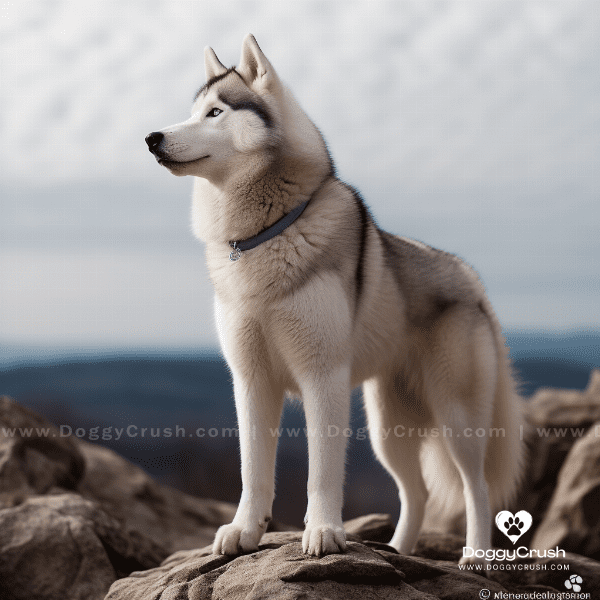
Temperament and Personality Traits
Siberian Huskies have a unique temperament and personality that makes them a beloved breed by many. They are known for being friendly, outgoing, and affectionate with their families, but they also have a strong independent streak.
Sociable and Friendly
Siberian Huskies are naturally social dogs that thrive on human interaction. They love being around people and are known for their friendly and outgoing personalities. They are great with children and make excellent family pets, as they are patient and gentle.
Vocal and Talkative
Siberian Huskies are known for being a vocal breed and are not shy about expressing themselves. They are known to howl, whine, and even talk to their owners, making them a unique and entertaining breed to own.
Fun Fact
Siberian Huskies are one of the few breeds of dogs that are known to have a sense of humor. They enjoy making their owners laugh and are known for their playful antics.

Intelligence and Trainability
Siberian Huskies are a highly intelligent breed that are capable of learning a wide range of tasks. However, their independent streak and strong prey drive can make them a challenge to train.
High Intelligence
Siberian Huskies are a highly intelligent breed that can quickly learn new tasks and commands. They were bred to think for themselves and problem solve, making them adept at figuring out puzzles and challenges.
Positive Reinforcement
Training a Siberian Husky requires patience and consistency, as well as the use of positive reinforcement. They respond well to praise and treats, and training sessions should be kept short and engaging to keep them interested.
Fun Fact
Siberian Huskies were one of the first breeds to be used as therapy dogs. Their friendly and outgoing personalities, as well as their ability to learn new tasks quickly, make them ideal candidates for this important role.
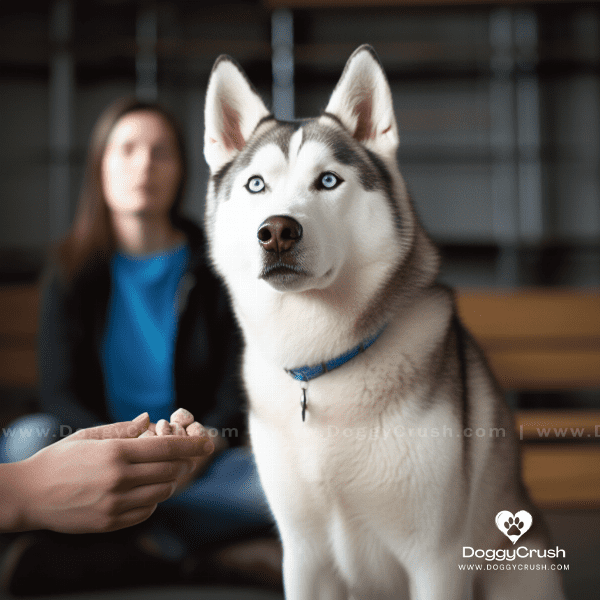
Exercise and Activity Requirements
Siberian Huskies are a highly active breed that require plenty of exercise and activity to stay healthy and happy. They are natural athletes and excel in a variety of dog sports.
Daily Exercise
Siberian Huskies require at least an hour of exercise each day to prevent boredom and destructive behavior. They enjoy a variety of activities, including long walks, hikes, and jogs. They also excel at dog sports, such as agility and skijoring.
Mental Stimulation
In addition to physical exercise, Siberian Huskies also require plenty of mental stimulation. They are a highly intelligent breed that thrives on learning new tasks and solving puzzles. Activities, such as training sessions and puzzle toys, can provide mental stimulation and help prevent boredom.
Exercise for Puppies
Puppies require less exercise than adult dogs and should not be over-exercised. Short walks and playtime in the backyard can provide sufficient exercise for puppies, and it is important to gradually increase their activity level as they grow and develop.
Fun Fact
Siberian Huskies are excellent escape artists and can easily jump over fences and dig under gates. It is important to provide a secure and fenced-in yard to prevent them from running away.
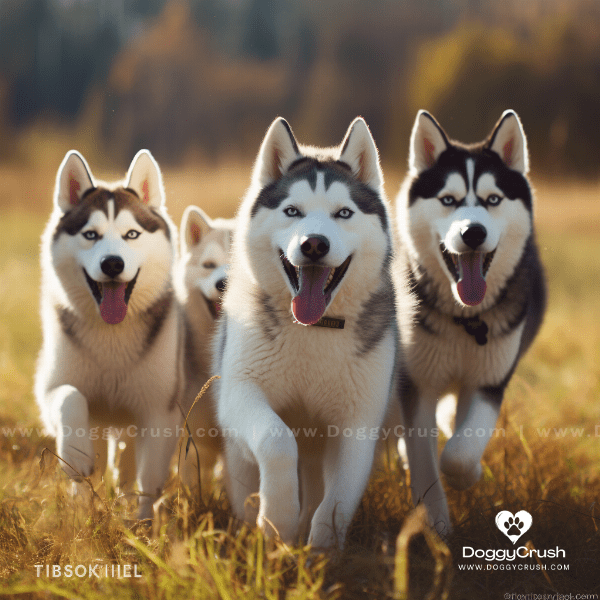
Grooming and Coat Maintenance
Siberian Huskies have a thick double coat that requires regular grooming and maintenance to keep it in good condition. Proper grooming can also help prevent skin irritations and infections.
Brushing
Siberian Huskies shed heavily twice a year and require daily brushing during these periods to remove loose fur and prevent matting. They have a thick undercoat that can be difficult to brush, and a slicker brush and metal comb are recommended to help remove tangles and knots.
Bathing
Siberian Huskies do not require frequent bathing and should only be bathed when necessary. Over-bathing can strip their coat of its natural oils, leading to skin irritations and dryness. When bathing, it is important to use a dog-specific shampoo and to thoroughly rinse the coat to prevent soap residue.
Nail Care
Regular nail care is important for all dogs, including Siberian Huskies. Overgrown nails can cause discomfort and can lead to difficulty walking and running. Nails should be trimmed regularly using a dog-specific nail clipper.
Ear and Teeth Care
Siberian Huskies are prone to ear infections, and it is important to clean their ears regularly to prevent wax build-up and infections. Teeth should also be brushed regularly to prevent plaque and tartar buildup, which can lead to dental issues.
Fun Fact
Siberian Huskies have a unique ability to self-groom, much like cats. They have a special oily coat that helps to repel dirt and keep their coat clean, and they will often lick themselves clean like a cat.

Health Concerns and Common Issues
Siberian Huskies are generally a healthy breed, but like all dogs, they are prone to certain health concerns and issues that owners should be aware of.
Eye Issues
Siberian Huskies are prone to several eye issues, including cataracts, corneal dystrophy, and progressive retinal atrophy. Regular eye exams can help detect these issues early and prevent further damage.
Hip Dysplasia
Hip dysplasia is a common issue in many dog breeds, including Siberian Huskies. It is a hereditary condition that can cause pain and difficulty walking. Regular exercise and maintaining a healthy weight can help prevent hip dysplasia.
Skin Allergies
Siberian Huskies are prone to skin allergies, which can cause itching, redness, and irritation. Common allergens include dust, pollen, and flea bites. Regular grooming and flea prevention can help prevent skin allergies.
Obesity
Siberian Huskies are an active breed that require plenty of exercise and activity to maintain a healthy weight. Obesity can lead to a variety of health issues, including joint problems and diabetes. Owners should monitor their Husky’s weight and adjust their diet and exercise accordingly.
Vaccinations and Preventive Care
Like all dogs, Siberian Huskies require regular vaccinations and preventive care to stay healthy. This includes regular check-ups, parasite prevention, and vaccination against common diseases, such as distemper and rabies.
Fun Fact
Siberian Huskies have been known to survive in extreme conditions, including temperatures as low as -75°F. Their thick coats and unique metabolism make them well-suited for living in harsh Arctic conditions.
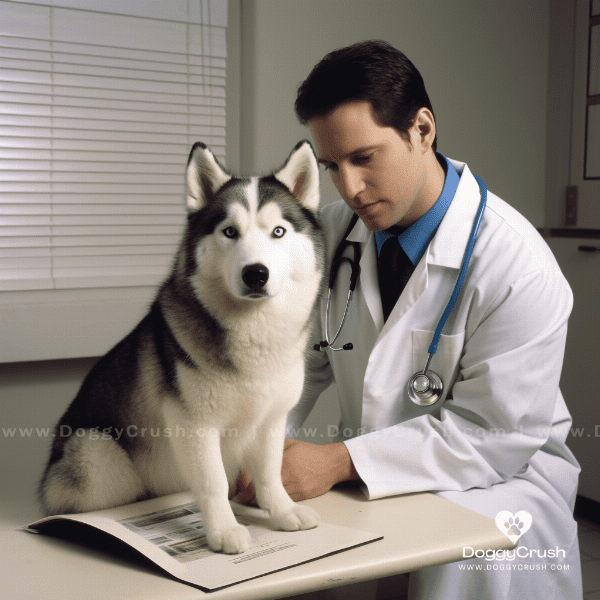
Diet and Nutrition
Siberian Huskies have unique dietary needs that are important to consider to maintain their overall health and well-being. A balanced and nutritious diet can help prevent a variety of health issues.
Protein and Fat Requirements
Siberian Huskies require a diet that is high in protein and fat to support their active lifestyle. A diet that is too low in protein and fat can lead to muscle wasting and weight loss. A high-quality dog food that is formulated for active breeds is recommended.
Carbohydrates and Fiber
While protein and fat are important, Siberian Huskies also require carbohydrates and fiber to maintain a balanced diet. A diet that is too high in carbohydrates can lead to weight gain and obesity, while a diet that is too low in fiber can cause digestive issues.
Feeding Schedule
Siberian Huskies should be fed on a regular schedule to help prevent obesity and digestive issues. Two meals a day are recommended, with the amount of food depending on the individual dog’s activity level and weight.
Water
Access to clean, fresh water is crucial for all dogs, including Siberian Huskies. They should have access to water at all times, and water should be changed frequently to prevent contamination.
Treats
Treats can be a great way to reward and train your Siberian Husky, but they should be given in moderation. Treats should not make up more than 10% of their daily calorie intake, and high-quality treats that are low in fat and calories are recommended.
Fun Fact
Siberian Huskies have a unique ability to regulate their metabolism, allowing them to survive on very little food for long periods of time. This ability was essential for survival in their native Arctic environment, where food was often scarce.

Living with a Siberian Husky Dog: Tips and Considerations
Crate Training
Crate training can be a helpful tool for owners of Siberian Huskies, as they have a natural tendency to den. A crate can provide a safe and secure space for your Husky to rest and relax, as well as a helpful tool for house training.
Fun Fact
Siberian Huskies have been used in several famous expeditions, including the 1925 serum run to Nome, Alaska, and the first successful American expedition to the summit of Mount Everest in 1963.
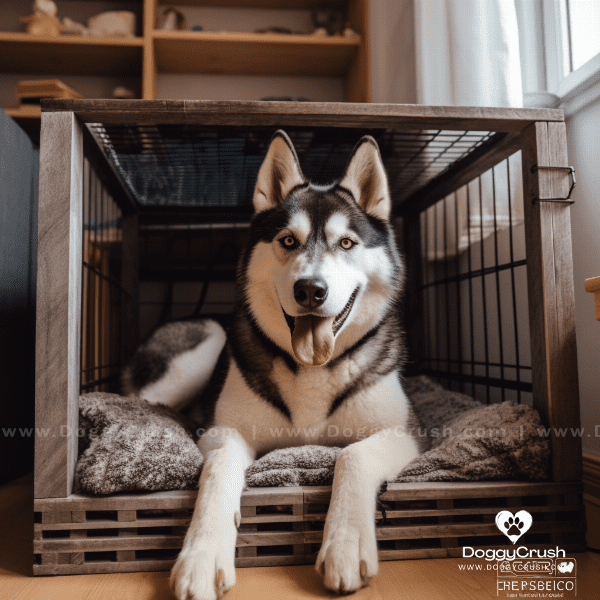
Choosing the Right Siberian Husky for Your Lifestyle
Siberian Huskies are a unique breed with specific needs and considerations that potential owners should take into account when choosing a Husky that is right for their lifestyle.
Energy Level
Siberian Huskies are a highly active breed that require plenty of exercise and activity to stay healthy and happy. Potential owners should be prepared to provide daily exercise and mental stimulation to prevent boredom and destructive behavior.
Living Space
While Siberian Huskies are adaptable and can live in a variety of environments, they do require plenty of space to exercise and play. A fenced-in yard is ideal for allowing your Husky to run and play, but they can also do well in larger apartments or homes with plenty of room to move around.
Grooming Requirements
Siberian Huskies have a thick double coat that requires regular grooming and maintenance. Potential owners should be prepared to brush their Husky’s coat daily during shedding season and to bathe them only when necessary.
Training and Socialization
Siberian Huskies can be a challenge to train due to their independent nature, but with patience and positive reinforcement, they can learn a variety of tasks and commands. Potential owners should be prepared to provide plenty of socialization and training to prevent behavioral issues.
Health Concerns
Siberian Huskies are generally a healthy breed, but they are prone to certain health concerns and issues that potential owners should be aware of. Regular veterinary check-ups and preventive care can help prevent health issues from developing.
Fun Fact
Siberian Huskies were one of the first breeds to be recognized by the American Kennel Club, receiving official recognition in 1930.
